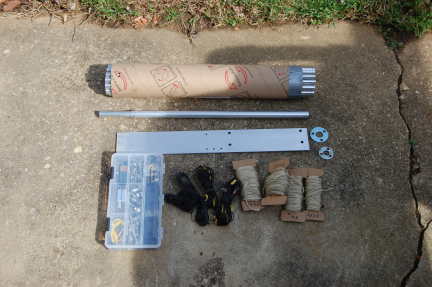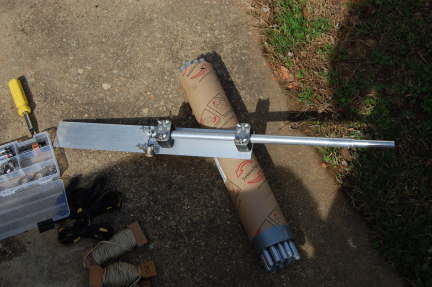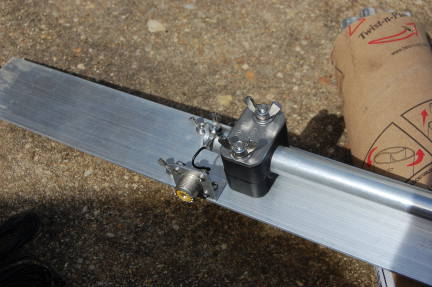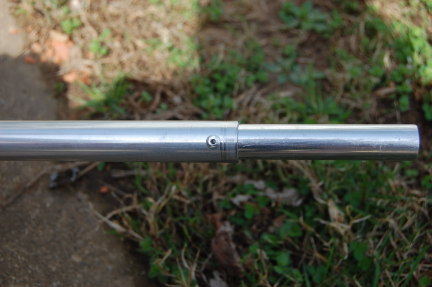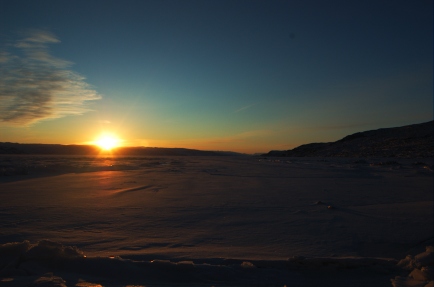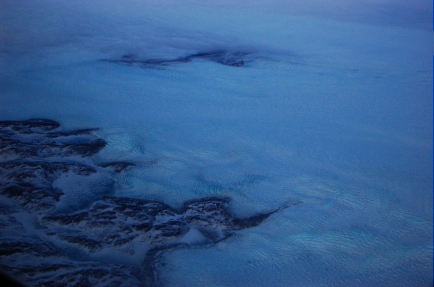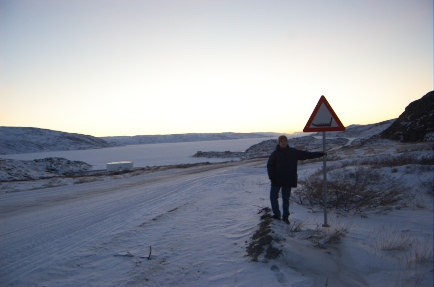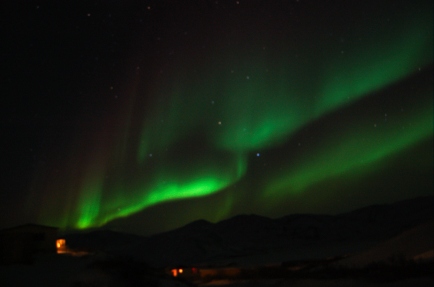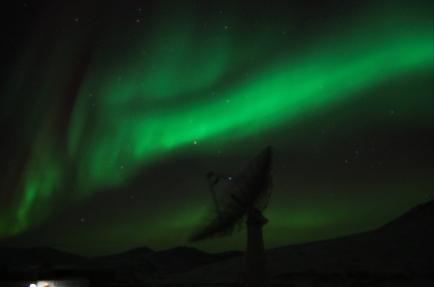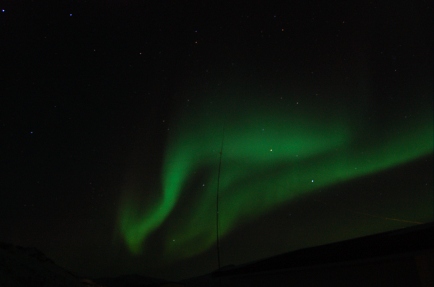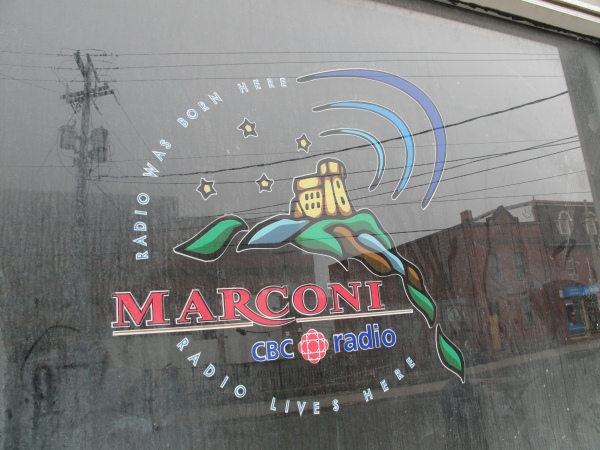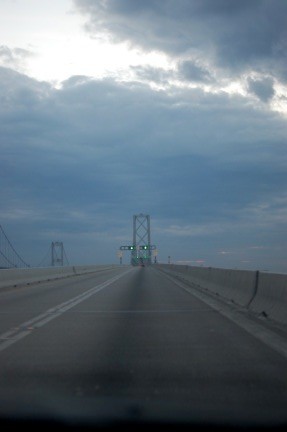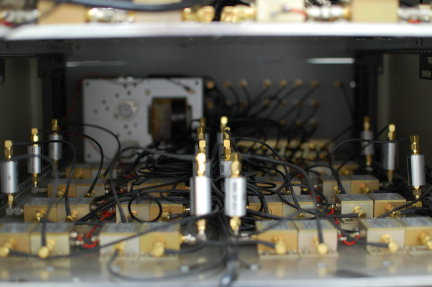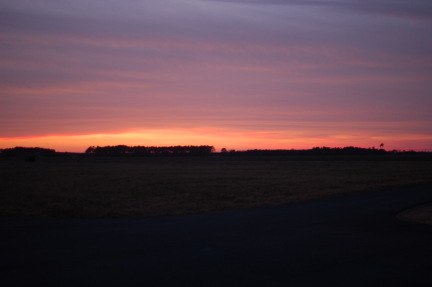Posts Tagged ‘travel’
 A Portable Vertical Antenna
A Portable Vertical Antenna
With the loss of my preferred frequent flyer status, airlines tightening their checked luggage allowances, and the addition of another traveler to the family, I’ve been contemplating a new portable antenna that is easier to pack than my usual DK9SQ mast and dipoles. I don’t do high-priced reduced-size antennas if at all possible since portable installations usually have other efficiency-reducing problems. Multi-element antennas take up additional space and have feeding and installation complications that are unnecessary for the casual DX operator. So, that leaves us to choose between a vertical and a dipole.
A few words about efficiency: Dipoles have a distinct efficiency advantage over verticals in almost every practical installation for 40 meters and up, except when the vertical is physically placed in or over salt water. Radiation efficiency tends to be dominated by near-field conditions, pattern is dominated by stuff that’s farther away. This is why vertical dipoles work so well for long-haul DX when placed within a few wavelengths of salt water. They don’t need the near-field efficiency enhancement as much as base-fed verticals, but they still leverage salt water for developing their far-field radiation pattern, especially at low angles required for long-haul communication.
I’m a casual DX operator, not a DXpeditioner, so I never operate on 160 or 80 meters. That is, considering the discussion above, why I have been using dipoles with the DK9SQ. But, verticals have a distinct advantage over dipoles in the sense that they are self-supporting. I decided to build a vertical because: 1) my next DX trip would include time near a beach and 2) I wanted to be able to bring my own support as I had with the DK9SQ.
My remaining requirements were now simple:
- A vertical antenna that requires no additional supports. Guying is OK.
- The antenna must be full-size (quarter wavelength) on 40 meters and above.
- Experience has shown that multi-band operation is desirable, but instant band switching is not necessary.
- The longest piece must fit inside my suitcase (20 in / 50.8 cm maximum length).
- Field assembly and repair with only a Leatherman tool.
- Minimum cost, minimum weight, minimum volume, minimum installation time.
And this is what I came up with:
There are 21 aluminum sections, most with a “swaged” (actually, a poor-man’s swage to be described in a moment) end and a slit end. They are shown here bundled perfectly inside a section of cardboard shipping tube. An 18 x 2.5 x 0.125-inch aluminum plate serves as the base. I used DX Engineering resin support blocks to insulate vertical from the base. A point could be fashioned on the bottom of the base and a foot plate attached to push into soft soil, but that has not been done.
Most sections fit together using overlapping joiner pieces that I previously referred to as “poor-man’s swaging.” I’m not sure that it’s actually a savings over paying a local shop to swage the ends for you when time is considered in addition to material, but I cut telescoping pieces six inches long and fastened them three inches deep in one end of a 17-inch section of tubing with two offset and orthogonally-placed aluminum pop rivets for a total length of 20 inches. This geometry not only fits in my suitcase, but results in a very small amount of wasted material as well.
The other end of each piece is slit about 2 inches and they mate with an all-stainless steel hose clamp. The first 10 feet of the antenna are 0.75-inch 6063-T832 tubing followed by telescoping sizes down to 0.375-inch at the very top. The transition pieces are a full 20 inches long and are slit on both ends. The full-size antenna will stand in a light breeze, but guying is a good idea. Guy rings are fashioned out of flat washers drilled in three places.
Tune-up is easy…the more radials you use, the less critical their length. After about 8 or 10, you’re in the clear here. I never attached enough to prevent them from affecting the tuning. If you only plan to have a couple of radials, go ahead and cut them to 1/4 wavelength (even though ground proximity will detune them). Then, set the length of the antenna using the required number of 17-inch sections (the 234/f formula is surprisingly close) with the last section being a variable length for fine tuning.
I’ve intentionally left out most of the details of the antenna itself because I don’t expect anyone duplicate it exactly. But, here are a few notes for anyone considering building one themselves:
- There are lots of parts vendors out there. McMaster-Carr and DX Engineering will get you there in one order from each. There is a surprising amount of overlap in their inventories. Get the hose clamps from McMaster…even if you get stainless-stainless (stainless band, stainless screw), they are about 1/3 of the DXE price. On the other hand, the resin support blocks are cheaper from DXE.
- I carry a compact antenna analyzer (Autek Research VA-1) with me. Field tune-up is a snap and it runs on a single transistor battery. It’s about 1/4 the size and weight of an MFJ-259 and good enough for amateur work. Oh, and I bought mine used for a fraction of the MFJ.
- A tubing cutter is fine if you only have a half-dozen or so cuts. But, if you have a chop saw or need an excuse to buy a chop saw, it will make cutting the tubing far easier. My hands were raw for a few days after cutting the tubing by hand. I’m sure the antenna performs better on account of it, though.
- Find a friend with a metal-cutting bandsaw to slit the ends of your tubes. I went through a half pack (McMaster mega-size pack) of cut-off wheels for my rotary tool doing my slits.
- McMaster only sells the aluminum plate in 36-inch pieces. If you don’t have the aforementioned chop saw, an angle grinder with a cut-off disk does a surprisingly good job.
- I pack a combination-screwdriver that has hex drivers that fit the hose clamps and #6 nuts. Even though the antenna can be erected with only a Leatherman tool doesn’t mean it has to be.
- The small parts box shown in the top picture holds all of the parts for the antenna—it was 2 USD at Home Depot.
- The final and most critical component is a clip-lead that can be used to attach various nearby metal structures to your ground plane. I have used it to make a temporary radial out of excess tubing sections on 12 meters as well.
That’s it. The antenna goes up in a few minutes, especially if not used at full length. I used it successfully last week as OA5/K8GU, which will be detailed in a future post.
 A Winter Trip to Greenland
A Winter Trip to Greenland
Last year, I managed to scrape together some equipment funds at work to buy a small spectrograph system for studying atmospheric light emissions (airglow and aurora). A co-worker secured the funds and contacts for us to install it at an observatory in Greenland. Because we need to make the measurements at night, and because the instrument was delivered in early December, we made immediate plans to go to Greenland as soon as possible. (Sarah is certainly laughing at this point because the plans were actually far from immediate and we bought our passage just over one week before departure.)
Greenland is only a short (4- to 6-hour) flight from the NE U.S., however the only route that operates in winter (and indeed the only commercial route) is on Air Greenland via Copenhagen, which operates four round-trip flights per week in winter. This turned getting there into a two-day affair of perverse travel arrangements totaling over 12,000 air miles to go about 4200 miles round-trip on the great circle. I met my co-worker, a United Airlines devotee (myself an American Airlines devotee), in Copenhagen and we flew to Kangerlussuaq (Sondrestrom) on Air Greenland.
One of the things that strikes you about Greenland as you approach Kangerlussuaq is how otherworldly and remote it is. Kangerlussuaq is the site of the former U.S. Sondrestrom Air Force Base, and one of two runways (the other is at Thule) on the island large enough to accommodate aircraft capable of flying to Greenland from abroad (this is a mild, although amusing exaggeration). Air Greenland has its hub there, shuttling passengers off to towns around Greenland on twin-engine turboprops like the Dash-8. It is, as our host explained, “…not your typical Greenland town. It is far inland at the end of the fjord and not on the coast. The only reason it exists is because of the airport.” Fuel and supplies are all brought in from outside. Like most current and former U.S. military installations worldwide, it is reliant on diesel fuel for its on-going existence. It’s sobering to be someplace that is totally unsustainable, although one might argue similarly of many U.S. cities, but I digress.
Kangerlussuaq is also near “the dog line,” north of which sled dogs are very common. Here is one of the two road hazard signs we saw while driving around…dogsled crossing:
The instrument set up easily the first afternoon and we were able to collect some data with it that night. As we were setting the instrument up, we heard reports of an Earth-directed CME from the Sun and hoped for aurora over the next few days. We were not disappointed…
The second night, I stood “aurora watch” in the cold while my warm-blooded co-worker processed the previous night’s data. Soon, I saw some faint cloudy white sheets way down on the horizon and I ran back in to alert him and retrieve the camera tripod. This photograph was taken facing toward the east southeast.
And, the 3.5-MW peak L-band incoherent scatter radar was running. The dish is blurred because it is moving.
And, here is a shot of my fan dipole strung up on the DK9SQ mast.
Speaking of radio, I did manage to make a few QSOs as OX/K8GU on 17 meters, but not as many as I would have liked. The combination of high absorption in the auroral oval (mostly to our south during our stay), little sunlight, a poor low-angle shot (required to avoid the auroral zone) to North America, short openings, and the fact that we were well-occupied with work for the four days we were there conspired to keep my contact count low. QSOs will go into LoTW soon—the certificate was issued yesterday. I have not yet designed a card, but there will be a special card. Thanks to those who did contact me.
 DXpedition QSLing
DXpedition QSLing
This post might better be titled “supporting things that you value.” A recent large-scale DXpedition to a “new one” just started sending out QSL cards in the past few weeks. I have seen a bit of traffic leaking onto the regional contest club’s e-mail reflector about QSLing this operation and today someone complained that QSL requests that included donations were being processed rapidly and that he had not yet seen his. He was thoroughly chastised by a number of people on the reflector (including one of the DXpedition operators who went on at some length about the cost of the DXpedition) before the thread was (wisely) quashed by the moderator.
I composed a short reply very early in the melee, but decided (also wisely) not to contribute it because it really had little to do with contesting. So, I’m writing here in hopes that someone finds it interesting.
When I was a new ham, I won a copy of the ARRL Operating Manual at a hamfest. It sounds inane now, but I read the thing cover to cover. In the chapter on DXpeditions, the author writes, “A donation should never be a condition for receiving a QSL card.” That has stuck with me through the years. The fundamental question is: why spend tens of thousands of dollars on the effort only to hold the operators who worked you hostage for a donation that might cover your QSLing costs if you’re lucky?
But, life is rarely black and white and most DXpeditions understand the futility of that question, so the situation outlined above rarely happens. In the present scenario, the DXpedition stepped into the gray by prioritizing donors ahead of non-donors. I have no problem with this. In fact, as I began to write in my reply, it is a matter of supporting things that are important to you. If having a card for the “new one” is important so you get on the Honor Roll for this year’s DXCC Yearbook, how much is that worth?
This falls into the same category as people who used to complain about the results of contests sponsored by CQ magazine being unavailable for free online. Well, if you want the results, buy the magazine!
Enough ranting…did somebody mention that CW Sweepstakes is this weekend? SWEEPSTAKES!
 TI7/K2DBK Post-event wrapup, part 2
TI7/K2DBK Post-event wrapup, part 2
This is part 2 of the series, click here to read part 1
It’s been another crazy week at work and at home and I’d hoped to have another entry or two posted by now, but I just haven’t had the time. I’ve finally found a few minutes, so I’d like to focus on things from a DX perspective and talk a bit about QSLing.
As I’ve previously noted, the weather kept the total number of contacts far lower than I’d hoped, with the total number of contacts ending up at 87 for the week (including one duplicate who I helped out with an antenna check). It looks like I worked 22 different countries though I believe that one of those will be a busted call: I logged a caller with a “DX” prefix which would correspond to the Philippines but at the time I was working into Europe and I suspect that it’s actually a “DL” call. In terms of “best DX”, I worked into European Russia (UA) and Ukraine (UT) a few times, with the majority of the countries being in central Europe such as Spain, Italy, France, Belgium, Germany, Hungary, and others in that area. I worked relatively few US states, though I don’t have good statistics on the because I didn’t get the state from all the operators that I worked. Most of the stateside contacts tended to be in the US Southwest although I did work up into Virginia and farther up the US East Coast for a few contacts.
As I mentioned in my last post, I did manage to get a full-blown pileup going a few times, and I can really understand how addicting this can be. I’d love to be able to operate from a “real” DXpedition, or even from a “primarily radio” vacation somewhere, but for now my vacation time is limited so I tend to squeeze in radio when I can. I hope that at some point over the next year or two I can get creative and find time away for a “radio” vacation.
Regarding QSLing, I got a question this week from a station asking me about whether the contacts would be uploaded to Logbook of The World. As regular readers of this blog know, I’m a big fan of LoTW, and would love to make the contacts available there. However, I’m having some issues getting a LoTW certificate issued and it’s not clear when (or if) that issue will be resolved. (This only applies to my operating from TI7.) In the meantime, if you need a card, please QSL via my home call the “old fashioned” way with a paper card. Because of the relatively few contacts made, I’m not going to have a bunch of card commercially printed but I will design and print a card specifically for this operation. My QSL information is always kept up to date at my entry on qrz.com.
If you want to check to see if you’re in my TI7 log, I’ve uploaded that to the Clublog website which you can search here. If you think you worked me and you can’t find your entry in the online log, please drop me a note and I’ll check for you as it’s entirely possible that I busted a call or two.
 TI7/K2DBK Post-event wrapup, part 1
TI7/K2DBK Post-event wrapup, part 1
It’s been a very busy week for me both at work and at home following my vacation, so it’s taken me a while to find the time to start writing this. I’d hoped to provide a few more updates while I was in Costa Rica but I never found the time so I’ll do my best to try to remember what happened. I’m going to try write a number of shorter postings so hopefully I can get them all out over the next couple of days.
In my last posting, I’d talked about how it had been rainy all week. That weather continued, but I finally did figure out a way to get on the air for more than 10 minutes at a time.
The problem was that my initial setup was on part of the outdoor deck with everything exposed to the elements. I would have been happy to bring the feedline inside, but the air conditioning system in the house we were staying at has sensors such that you can’t leave the sliding doors open even a little without the system shutting down. Considering the temperature and humidity, that wasn’t a realistic option, so I had to operate outside and hope for the best. In the picture, you can see the antenna in the background and I’ve got the power supply sitting on the chair with the radio on a little table. As long as it was dry, this worked out fine. Unfortunately, it didn’t stay dry long enough for me to spend any significant time on the air.
On Friday afternoon, the weather was once again uncooperative, and I was starting to think that I’d wind up leaving Costa Rica with only about 5 QSOs. However, Sharon pointed out that the deck next to the common area of the house had a pretty big overhang, and I realized that even with some of the really torrential downpours we’d had that area had stayed dry. I moved down to that location and set up the antenna there, configured for 15m, and brought out the rest of the gear to the new location.
Sure enough, after a few minutes of respite the skies opened up again, but although the antenna was getting wet, the radio, power supply, and my iPad (used for logging) were dry. (As you can see from the photo, I did have a towel ready, just in case.) I got on 15m at just about 21:00Z and called CQ and was answered by a station in Brazil. Being in Costa Rica, that wasn’t quite the DX that I was hoping for, but very shortly after that I got spotted on the DX Clusters and started getting a lot of calls from Europe. All told, I was on the air for about 40 minutes (we had plans and I had to get ready) and worked 33 stations that day. (I’ll have some details about the countries I worked in a future posting.) Although I’ve worked from a DX location before (as ZF2DK), this was the first time that I ever had what I would consider to be a full-blow pileup. I think that I did fairly well in managing things, managing to at least get enough of a partial call so that I could respond back with “the station ending in xyz only please” on almost every call. I don’t have enough experience yet to be able to pull full callsigns out of a pileup every time, but I know that’s something that comes with experience. By the second day of running stations, I could tell that I was doing better.
Part 2 of this series continues here.
 More Travelling
More Travelling
Once again, I am travelling because of work. This time it is the other side of North America, I am currently in St John’s Newfoundland.
While Ontario has had a heat wave the weather in St John’s has been cool and foggy. The fog has been almost continuous since I arrived on Sunday and it even caused one aborted attempt at landing when flying in from Ottawa. The conference has been good and in the evening we have visited Kelly’s Bar which has great fish and chips as well as live music. For vegetarian food I recommend the Sprout too, great curry! (Just realized, showing my British origins with my eating habits – fish n’ chips and curry).
The fog lifted a little today and gave an opportunity to see more of the painted ‘jelly bean’ houses that St John’s is famous for.
The conference is now over and I fly back tomorrow afternoon. However, in the morning I plan on visiting Signal Hill the receiver site of Marconi’s first trans-Atlantic radio transmission. I will report on the visit in a later post.
